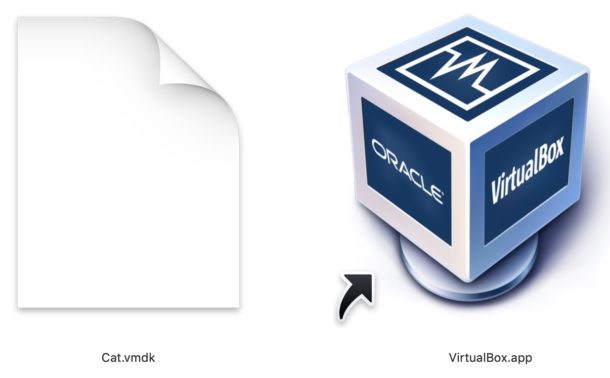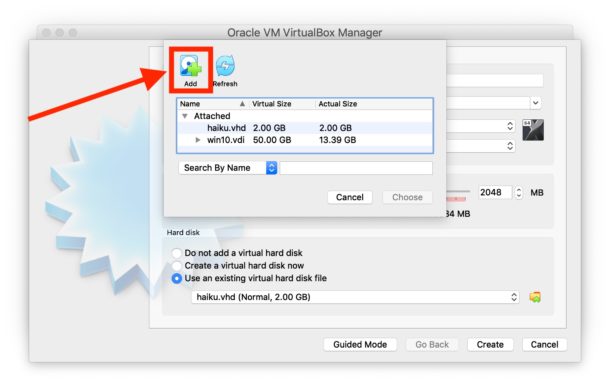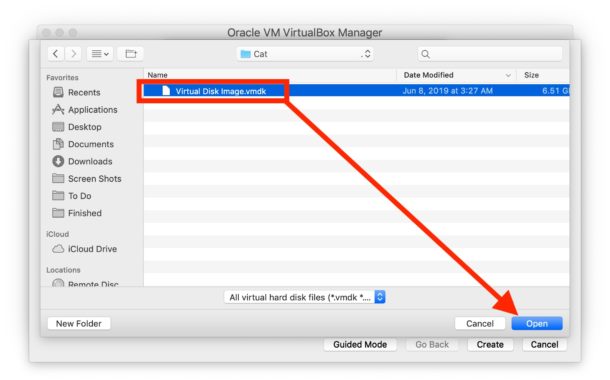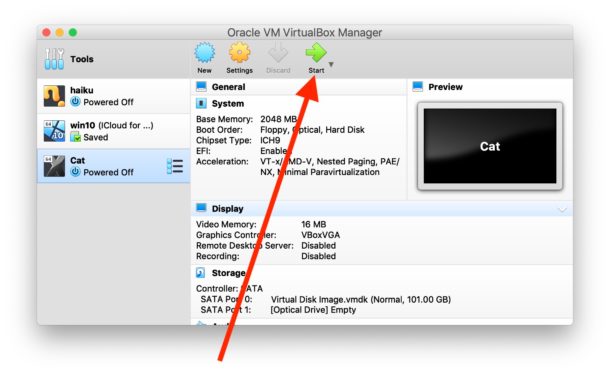How to Open a VMDK File in VirtualBox

Need to open a VMDK file in VirtualBox? This article will show you how to setup and use a VMDK virtual machine file with VirtualBox. This particular tutorial is demonstrated on a Mac, but using a VMDK with VirtualBox this way should work the same on Windows and Linux too.
VMDK is short for Virtual Machine Disk, and VMDK files can be created by VMWare, VirtualBox, Parallels, and other virtualization software. You may have noticed that you can’t simply open a VMDK virtual machine file directly with VirtualBox, nor can you drag and drop it to launch. Instead you’ll create a new virtual machine and use that as the disk, using the steps outlined below.
How to Open a VMDK File with VirtualBox on Mac, Windows, Linux
- Open the VirtualBox application, then choose “New” to create a new virtual machine
- Give the new virtual machine a name and set the type, OS version, RAM, and then click to choose “Use an existing virtual hard disk file” and click the folder icon to navigate the file system
- Click “Add” to add a virtual hard disk file
- Navigate to and select the VMDK file and choose “Open”
- Confirm the VMDK drive is selected then select “Choose”
- Now choose “Create” to create the new virtual machine using the VMDK file
- Click “Start” at the VirtualBox Manager screen to boot the VMDK virtual machine







Once you click Start the virtual machine will boot using the VMDK file you selected as the virtual hard disk file.
VMDK files can be made of just about any operating system, including Windows, Linux, MacOS and/or Mac OS X. The VMDK virtual machine files are often made available or transferred around as pre-built configurations of operating systems, making it easy to use or test the same setup on multiple machines or by multiple people.
This is probably somewhat obvious, but if you move the location of the VMDK file the VirtualBox machine will no longer boot until the VMDK file is located again.
If you’re finished using the VMDK file and the related virtual machine, you can delete that VM from VirtualBox like removing any other VM.
You might be wondering if it’s possible to convert a VMDK file to VHD or VDI or another virtual machine disk format, and the answer is yes though it’s not nearly as easy as converting an ISO to VDI, and instead you’ll have to rely on this free tool from Microsoft that runs in Windows. If you happen to know of another way to convert VMDK files, share it with us in the comments below.
If this article interests you, check out other virtual machine articles!

